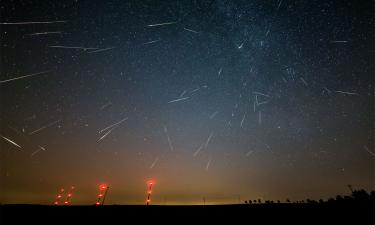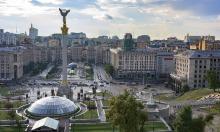Two whales stall in their journey back toward Pacific Ocean
Two wayward whales have been swimming in circles near the Rio Vista Bridge, showing that it would be not so easy to get them back to the safety of the Pacific Ocean.
"They're wild animals, and they're going to do what they want," Coast Guard Petty Officer Brian Leshak said Monday night.
The humpbacks, nicknamed Delta and Dawn, have traveled 90 miles (145 kilometers) inland toward the state capital since taking a wrong turn more than a week ago. Wildlife officials were hopeful they would return to the open water when they moved 20 miles (32 kilometers) southwest toward the ocean.
But on Monday they began swimming in circles near the bridge on the Sacramento River.
Scientists and the U.S. Coast Guard had tried to position more than a dozen boats in front of them to turn them around, but the whales appeared to be navigating by their own compass.
In addition, attempts to guide the whales toward the ocean by causing vibrations by banging metal pipes in the water did not work Monday.
"We're reassessing what to do, and we're working on a plan to actually herd the whales," Leshak said.
Scientists continued to watch closely because their route includes sloughs leading to muddy deltas that could trap the whales. The whales appear to have been wounded by a boat's propeller.
The pair will have to make their way through the pylons of four bridges to reach the San Francisco Bay, and will have to swim under the Golden Gate Bridge to return to the ocean, Wilson said.
Federal officials have authorized researchers to fire darts carrying a satellite tracking device beneath the mother's fin to ensure authorities can locate the whales if they wander from the river into the delta's maze of tributaries.
"They're at this point lost. We don't think they have any clue," Rod McInnis of the National Marine Fisheries Service.
Scientists theorized that the whales began circling at the Rio Vista Bridge in the rural Sacramento-San Joaquin River Delta because vibrations from traffic upset them. But the whales could not be coaxed forward even when the drawbridge was raised to halt the flow of vehicles.
No one is certain why the whales decided to go back toward the ocean, but Jim Oswald of the Marine Mammal Center said the change may have been spurred by tug boats. The tugs' engines fired up about 100 yards (90 meters) away from the pair, and the sound may have had an influence.
Wilson said there was no indication that the whales were in poor health. "They have been very consistent, and moving along at a good pace," she said.
The whales' plight has been followed closely, with thousands of people gathering along the banks of the port and the river to see the pair.
A humpback named Humphrey swam in the delta for nearly a month in 1985 before scientists used recordings of whale songs to lure him back to the Pacific.
Subscribe to Pravda.Ru Telegram channel, Facebook, RSS!




